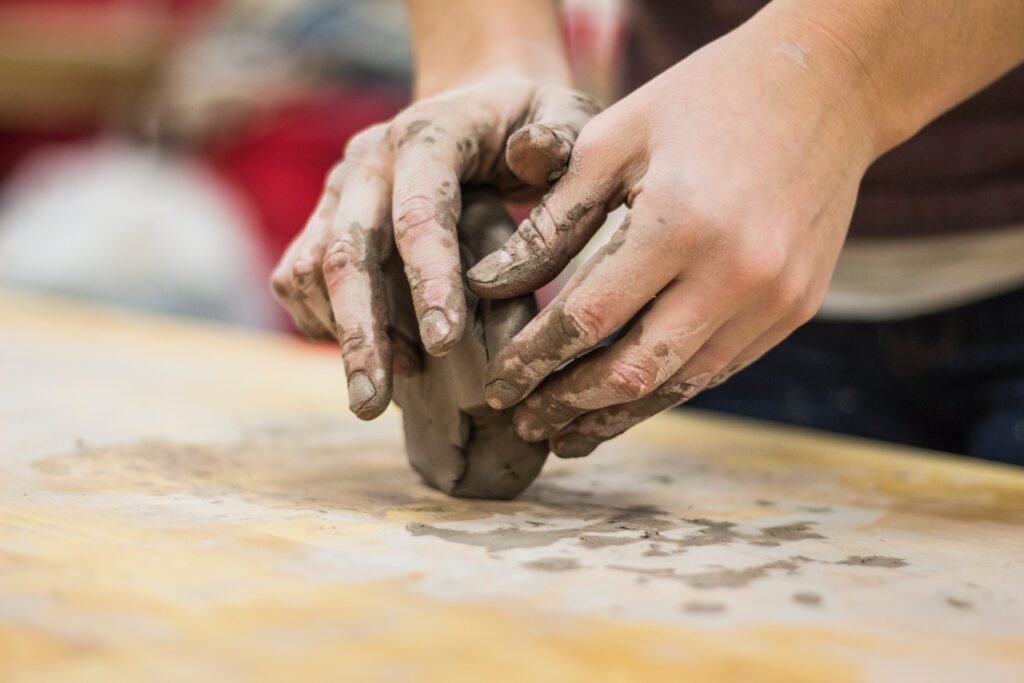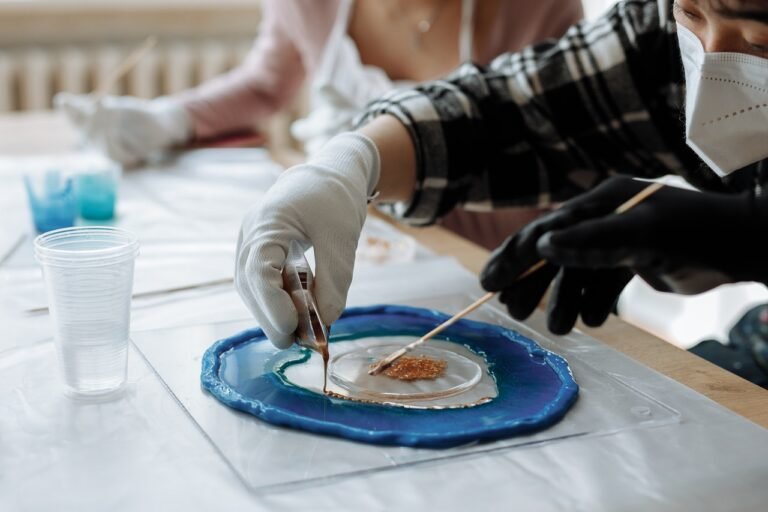What happens if you don’t wedge clay? (Video Guide)
Many things can go wrong while you throw your clay on a pottery wheel that leads to unwanted results: disappointment with your art. But don’t worry, in this article I will discuss one important step called wedging. What is it and why is it important. And what is the difference between wedging and kneading clay?
As previously mentioned, wedging is an important part when you are doing pottery because it removes air pockets from the clay. Without this procedure, your work can be messed up in the end.
Before we start with hand-building or wheel-based technique, first we need to ensure an even consistency throughout the clay’s mass.
This involves physically coaxing the clay into a homogenous state by wedging and kneading.
A pugmill can be used for this process, so we don’t have to wedge and knead the clay by hand, but many still prefer to wedge and knead after pugging to ensure that the clay particles are evenly aligned.
If a clay mass has uneven consistency that has not been prepared well it will be almost impossible to throw on the wheel.
Every single air pocket that stays in your piece of clay, can mess up your work while working on a pottery wheel. Clay that comes directly from the store and is still in the original package won’t have any air pockets but when working with recycled clay, air pockets are very common.
Why Is It Necessary To Wedge The Clay?
When using recycling clay, you can also combine different colors and blend them perfectly, wedging comes in very handy. The primary reason to wedge the clay is to remove air pockets.
Technically what it means is that you throw your clay on the table or any other flat surface and roll the clay the same as you would roll your pastry. After wedging, your clay becomes more flexible, with better consistency, without air pockets, and also ready to be reused many times.
But before you start with wedging, clean your surface and make sure there are no particles which your clay can pick up when doing wedging.
Do You Need To Wedge Clay For Handbuilding?
For the best final result, your clay needs to be pliable no matter if you are doing sculptures, hand-building, or spinning the wheel. Clay that comes fresh from the bag is already soft and good to go, but with all the other leftovers and used clay, the best start is to wedge it and make it softer.
To get even better results, artists are using clay aging to improve the workability and plasticity of clay bodies.
That means that clay will be stored for a period of time before its use in pottery making. Quality will be improved as long as the clay is well hydrated because of microorganisms and their activity in clay aging. The plasticity of the clay will improve over time because of bacterial growth and it is a good practice that old clay be mixed with new clay in a container to accelerate bacterial growth.
What Happens When Air Pockets Are Left In Clay?
When Clay that contains air pockets goes into the kiln there is a big chance that it is gonna crack or explode. Kilns are working at high temperatures and small air bubbles will ruin your craft.
Every potter will face this situation from time to time as these breaks and blow ups are part of potter’s life.

5 Different Types Of Wedging Clay
- Ram’s Head Wedging – Pushing the clay down and out releases trapped air, eliminates lumps, and makes the clay homogeneous. Throw your clay a couple of times on the surface to loosen the lump a bit.
This video demonstrates how to do it the right way. - Pugmill – With a pugmill, you let the machine do all the work. Simply put the clay into the pugmill and wait for the clay to be mixed. This option is good if you are having trouble with your wrists and you want automation to do the job. Pugmills are perfect for removing air pockets in your clay and for recycling all different types of clay that you may have somewhere in your workshop.
- Cut and Slap Wedging – With this technique, we use thin wire for slicing through our clay. The method is to put layers of clay upon another and then cut through the blocks. Your layers of clay will look like sandwiches so repeat this process until you are fully satisfied with the consistency of your clay. You can combine colors and wedge clays that have different consistencies easily.
This video shows how to use wire for slicing. - Coning – Coning, also known as towering or wheel wedging is another easy way to homogenize your clay. Simply place the clay on a wheel and lift your clay by squeezing it in while it is spinning and then push it down with your palms. It will remove any air bubbles that you missed and it will turn your lump of clay into a nice shape. In this video, you can see exactly how it looks like when a potter is coning: link.
- Spiral Wedging – This technique is also known as Japanese wedging and it is good if you have a large amount of clay. Using a slight twist of the hands opens up all parts of the clay ball, allowing any air bubbles to escape. Spiral wedging also lines up the clay particles. Basically in this method, we are spinning clay and pushing down, doing this with repetitions until your clay is ready for modeling.
How long should you wedge clay?
When your clay is fresh from the box, wedging is not necessary but of course, you can do it a couple of times.
For recycled clay is totally different story and it is important to wedge your clay at least 80 to 100 times before you start.
What Does It Mean To Score Clay?
To score a pot or piece of clay means to scratch hatch marks on it as part of joining clay pieces together. This is done before brushing on slurry and joining the pieces together. The process is often called “score and slip.”
What is the difference between wedging and kneading clay?
Wedging will remove all the air bubbles from our clay and kneading will make clay more durable.







